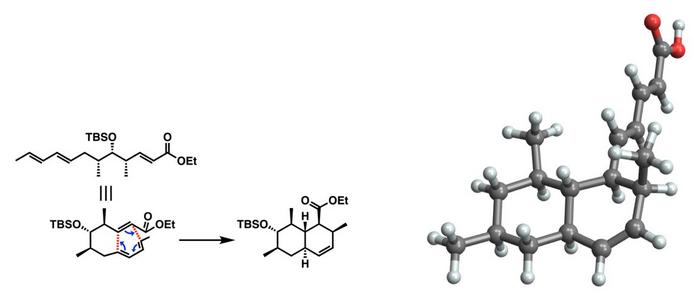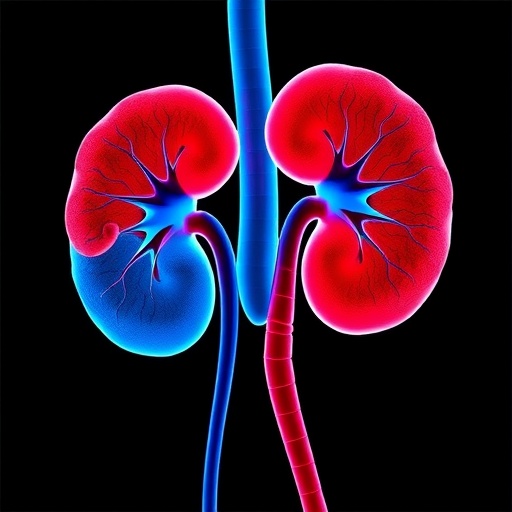The discovery of antibiotics in 1928 was a major turning point in the history of medicine. For the first time since the dawn of human civilization, doctors had gained access to an extremely powerful and effective tool to fight against a wide variety of bacterial infections. Today, bacterial diseases that were previously a death sentence can be cured, and infections following surgery or chemotherapy can be prevented or treated more effectively.

Credit: Isamu Shiina from TUS, Japan
The discovery of antibiotics in 1928 was a major turning point in the history of medicine. For the first time since the dawn of human civilization, doctors had gained access to an extremely powerful and effective tool to fight against a wide variety of bacterial infections. Today, bacterial diseases that were previously a death sentence can be cured, and infections following surgery or chemotherapy can be prevented or treated more effectively.
Unfortunately, the worldwide use (and abuse) of antibiotics led to the emergence of drug-resistant bacterial strains. Over time, bacteria that could normally be killed by a given antibiotic produced mutant offspring immune to it. These mutant strains are a major threat to public health, and the only safe course of action is to develop new antibiotic compounds.
Against this backdrop, a research team including Professor Isamu Shiina, Assistant Professor Takatsugu Murata and Mr. Hisazumi Tsutsui from the Tokyo University of Science (TUS) in Japan has now achieved a major breakthrough in the synthesis of new antibiotics. As reported in their paper published in ACS Omega in July 2023, the team achieved the first-ever gram-scale synthesis of tanzawaic acid B, which can serve as a candidate for the discovery of new drugs.
But what is tanzawaic acid B? In 1997, Professor Daisuke Uemura and colleagues working in the Tanzawa area of Japan isolated a series of organic polyketide compounds from the fungus Penicillium citrinum. These compounds were grouped together into what we now call the “tanzawaic” acid family, containing dozens of members ranging from A to Z1. In particular, tanzawaic acid B has attracted the most attention as it shares a common core structure with many tanzawaic acids, meaning that an artificial synthesis method for tanzawaic acid B could readily lead to synthesis methods for the rest.
However, synthesizing tanzawaic acid B from scratch is a challenging endeavor. The tanzawaic acids share a polysubstituted octalin skeleton—a structure composed of 10 carbon atoms in a tight pattern with multiple chemical groups at specific locations. The researchers synthesized this skeleton by utilizing a chain-like molecule that they had synthesized in a previous study. Then, by leveraging a carefully controlled intramolecular Diels-Alder reaction, they made these chains preferentially “fold” into the desired octalin skeleton.
The next challenge was to precisely modify the octalin skeleton in multiple steps to produce tanzawaic acid B. As octalin has eight carbon atoms that can participate in stereochemical reactions, any desired substitution effectively competes with 255 other possible arrangements. To tackle this issue, the researchers employed asymmetric alkylation and asymmetric Mukaiyama aldol reaction, which enabled them to produce the desired polysubstituted octalin compound tanzawaic acid B on gram scale.
Overall, this new synthesis technique could play a key role in the development of antibiotic drugs based on tanzawaic acids. Excited about the outcome of the study, Prof. Shiina comments: “For more than 25 years since its discovery, the total synthesis of tanzawaic acid B had not been realized, until now. The present synthesis method will hopefully lead to the creation of various compounds for pharmaceuticals in the future, including new antibiotic candidates for multidrug-resistant bacteria.”
With a continuous, large-scale supply of tanzawaic acids, researchers will soon be able to test their interesting biological activities, including antibacterial, antimalarial, and antifungal properties. “Further improvements to the synthesis of tanzawaic acid B are currently underway, along with the investigations of its biological activity and synthetic analogs,” concludes Prof. Shiina.
Let us hope that these efforts will soon lead to new tools for fighting drug-resistant bacteria!
***
Reference
DOI: https://doi.org/10.1021/acsomega.3c03634
About The Tokyo University of Science
Tokyo University of Science (TUS) is a well-known and respected university, and the largest science-specialized private research university in Japan, with four campuses in central Tokyo and its suburbs and in Hokkaido. Established in 1881, the university has continually contributed to Japan’s development in science through inculcating the love for science in researchers, technicians, and educators.
With a mission of “Creating science and technology for the harmonious development of nature, human beings, and society,” TUS has undertaken a wide range of research from basic to applied science. TUS has embraced a multidisciplinary approach to research and undertaken intensive study in some of today’s most vital fields. TUS is a meritocracy where the best in science is recognized and nurtured. It is the only private university in Japan that has produced a Nobel Prize winner and the only private university in Asia to produce Nobel Prize winners within the natural sciences field.
Website: https://www.tus.ac.jp/en/mediarelations/
About Professor Isamu Shiina from Tokyo University of Science
Isamu Shiina received BSc and MSc degrees from the Tokyo University of Science in 1990 and 1992 respectively. He became an Associate Professor in 2003 and a Full Professor in 2008 at his alma mater. His research interests include the development of novel synthetic methods and the total synthesis of naturally occurring compounds. He has published over 170 papers and received numerous awards, including the Chemical Society of Japan (CSJ) Award for Young Chemists (1997), the CSJ Award for Creative Work (2013), and the Commendation for Science and Technology Prizes by the Ministries of Japan (2015).
Funding information
This study was supported by JST, the establishment of university fellowships towards the creation of science technology innovation, Grant Number JPMJFS2144.
Journal
ACS Omega
DOI
10.1021/acsomega.3c03634
Method of Research
Experimental study
Subject of Research
Not applicable
Article Title
First Total Synthesis of Tanzawaic Acid B
Article Publication Date
19-Jul-2023
COI Statement
The authors declare no competing financial interest




